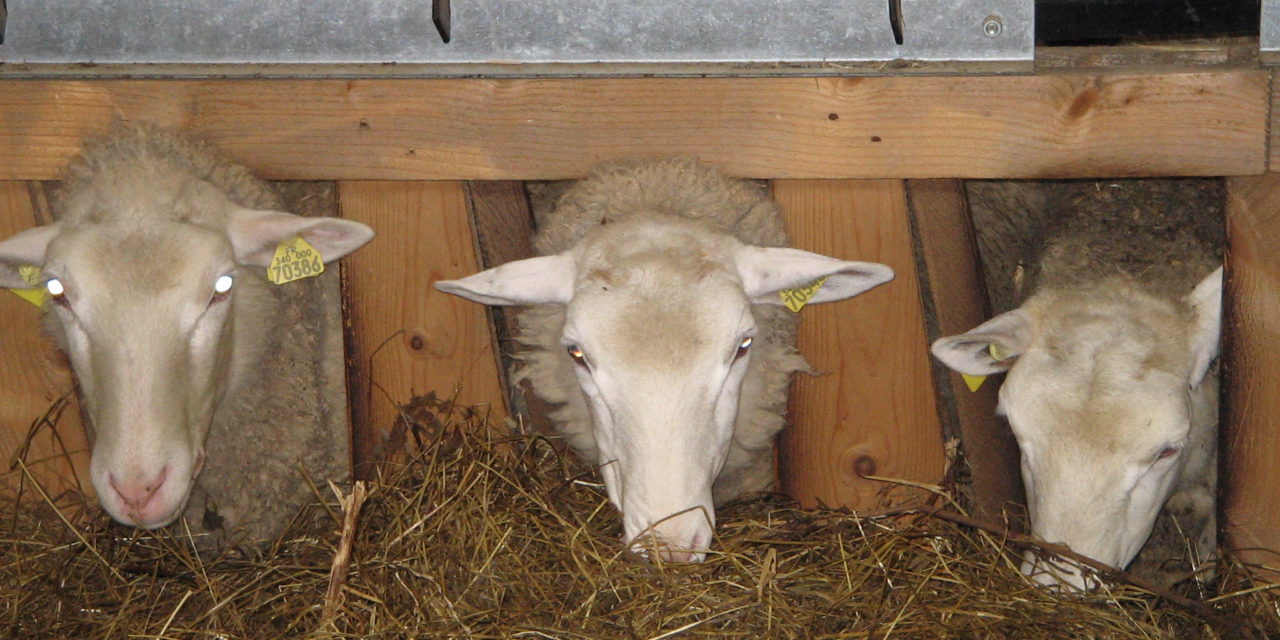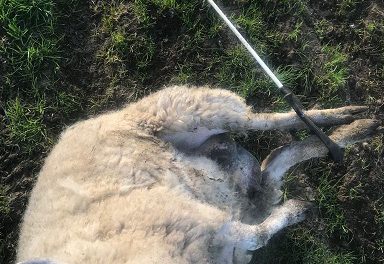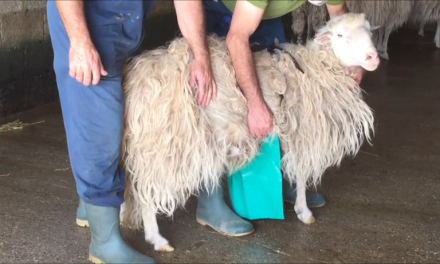This post is also available in:
![]()
![]()
![]()
Store Lambs
Factsheet name: Finished store lamb from pasture, conserved forage or concentrate diets
Need / Issue: Ration formulation based on forage availability and quality
Introduction
In grass-based systems of prime lamb production approximately 50% of spring born lambs are slaughtered between October and March. Many of these lambs are sold for finishing on dedicated finishing units and are finished either on autumn pasture or on conserved forage and/or concentrate based diets. The three main factors influencing profitability in store lamb finishing systems is buying price, the increase in lamb carcass price (c/kg) during the finishing phase and cost efficient carcass gain during the finishing period.
Performance from pasture
The main objective of grassland management should be to have a plentiful supply of highly digestible grass available to the animals throughout the finishing period. A number of studies were undertaken at Athenry to evaluate the performance of lambs grazing pasture between early October and mid-November and the results are summarized in Table 1. Acceptable levels of daily live weight gain are achievable from grazed grass into late autumn provided lambs have access to suitable pasture and are not forced to graze to a low sward height. The evidence shows that lamb gain increased as post-grazing sward height increased.
Table 1. Lamb performance form autumn pasture
|
|
Post grazing sward height (cm) |
||
|
|
4.2 |
5.2 |
6.1 |
|
Daily live weight gain (g/day) |
68 |
121 |
147 |
|
(Greenan 1987, 1988, 1999) |
|||
The response to concentrate supplementation at pasture depends on pasture availability and concentrate feed level (see Table 2). The highest response to concentrate supplementation was achieved for the first increment of supplementation and declines as concentrate feed level increased. Increasing the level of concentrate supplementation from 0 to 0.25 kg/day and from 0.25 to 0.5 kg/day yielded mean carcass gain responses of 0.18 and 0.11 kg carcass per 1 kg concentrate. Therefore 5.5 and 9.1 kg of concentrate was required for each 1 kg of carcass gain when daily concentrate feed level was increased from 0 to 0.25 kg and from 0.25 to 0.5 kg, respectively.
Table 2. Effect of concentration supplementation of autumn pasture on lamb performance
|
|
Concentrate feed level (kg/day) |
||
|
|
0 |
0.25 |
0.50 |
|
Slaughter weight (kg) |
41.6 |
44.8 |
46.6 |
|
Carcass weight (kg) |
17.1 |
19.1 |
20.3 |
|
Daily live weight gain (g/day) |
114 |
186 |
227 |
|
(Greenan 1999) |
|||
Finishing indoors
Many lambs that are to be slaughtered between January and March are finished indoors on diets consisting of concentrate offered ad lib or in combination with ensiled forages. Two studies were undertaken at Athenry to evaluate the effects of forage feed value, forage type and concentrate feed level on the performance of finishing lambs. A total of 550 Suffolk cross lowland lambs that were purchased in local markets were used.
Two grass silages and a maize silage were produced for each of these studies. The silages differed in feed value and were precision chopped at ensiling. The medium and high feed value grass silages had mean dry matter digestibilities (DMD) of 710 and 750 g/kg DM, respectively. The mean dry matter and starch concentrations of the maize were 270 g/kg and 250 g/kg DM respectively. The concentrate was formulated to have a crude protein concentration of 160 g/kg.
One of the treatments evaluated was concentrate offered ad lib. The level of concentrate offered was increased daily and ad lib intake was achieved within 10 days post housing. Lambs offered the ad lib concentrate diets received 0.5 kg fresh weight of the high feed-value silage as a fibre source. The lambs offered concentrate ad lib consumed an average of 1.5 kg concentrate daily for the duration of the study.
The effects of forage feed value and concentrate feed level on lamb daily gain are presented in Table 3. Regardless of forage feed value increasing concentrate feed level increased daily gain. The greatest response to increasing concentrate feed level was achieved with the medium feed value grass silage. Increasing grass silage feed-value yielded the same response as increasing concentrate feed level by 0.35 kg per lamb daily.
Diet type had a major effect on lamb kill out. The effects of forage feed value and concentrate feed level on kill out are presented in Table 4. Kill out varied from 42.5% to 49.1% for the medium feed value silage supplemented with 0.3 kg concentrate daily and the ad lib concentrate treatments respectively. Consequently weight at drafting is influenced by the diet offered during the finishing period as well as by desired carcass weight. For example, if the objective is to achieve a carcass weight of 22 kg, lambs offered the ad lib concentrate and lambs offered medium feed-value grass silage supplemented with 0.3 kg concentrate daily would need to be drafted at 44.8 and 51.8 kg, respectively. The difference in drafting weight is due to gut fill differences.
Table 3. Effect of forage type, feed value and concentrate feed level on lamb daily gain (g/day)
|
|
Concentrate feed level (kg/day) |
|||
|
|
0.30 |
0.65 |
1.0 |
Ad lib |
|
Medium feed value silage |
50 |
147 |
182 |
|
|
High feed silage |
132 |
182 |
204 |
248 |
|
Maize silage |
124 |
156 |
183 |
|
|
(Keady and Hanrahan 2013,2015) |
||||
Table 4. Effect of forage type, feed value and concentrate feed level on lamb kill out (%)
|
|
Concentrate feed level (kg/day) |
|||
|
|
0.30 |
0.65 |
1.0 |
Ad lib |
|
Medium feed value silage |
42.5 |
45.7 |
46.1 |
|
|
High feed silage |
44.4 |
45.9 |
47.6 |
49.1 |
|
Maize silage |
44.2 |
46.3 |
47.2 |
|
|
(Keady and Hanrahan 2013,2015) |
||||
Conclusions
- Good levels of lamb performance are achievable from autumn pasture.
- Response to concentrate supplementation at pasture declines as feed level increases
- For intensive indoor finishing, ad lib concentrate feeding resulted in the greatest daily margin over feed.
- For lambs offered ad lib concentrate the food conversion ratio was 10.7 kg concentrate per 1 kg of carcass gain.
- Increasing silage DMD by 4 units had a concentrate saving effect of 0.35 kg daily
- Medium feed value silage (i.e. DMD around 70%) should not be included as a major component of finishing diets for lambs.
- It is important to base drafting weight on the type of diet as well as on desired carcass weight.
Topic: Nutrition / management
Production: Meat
Animal Category: Lamb







